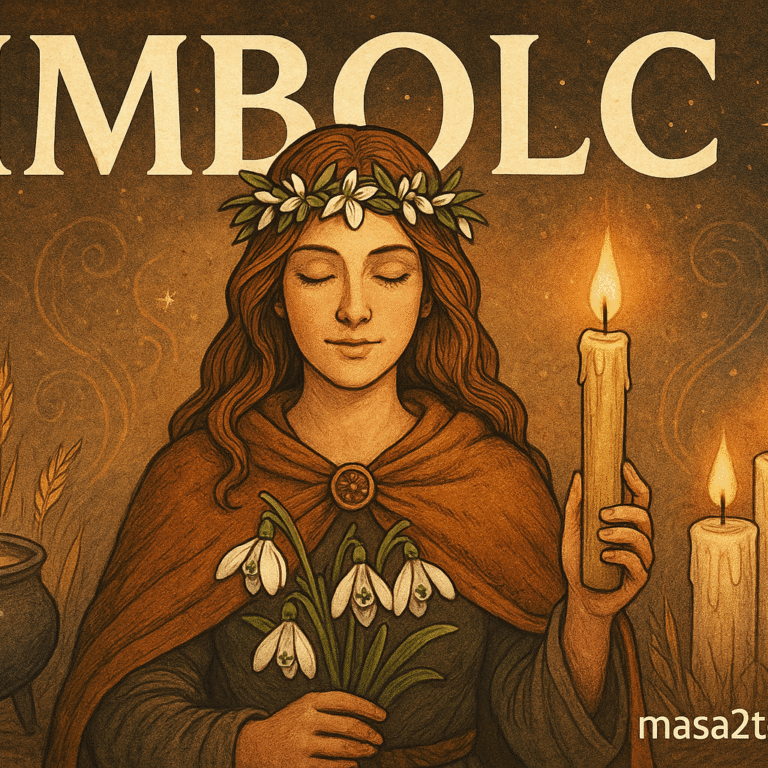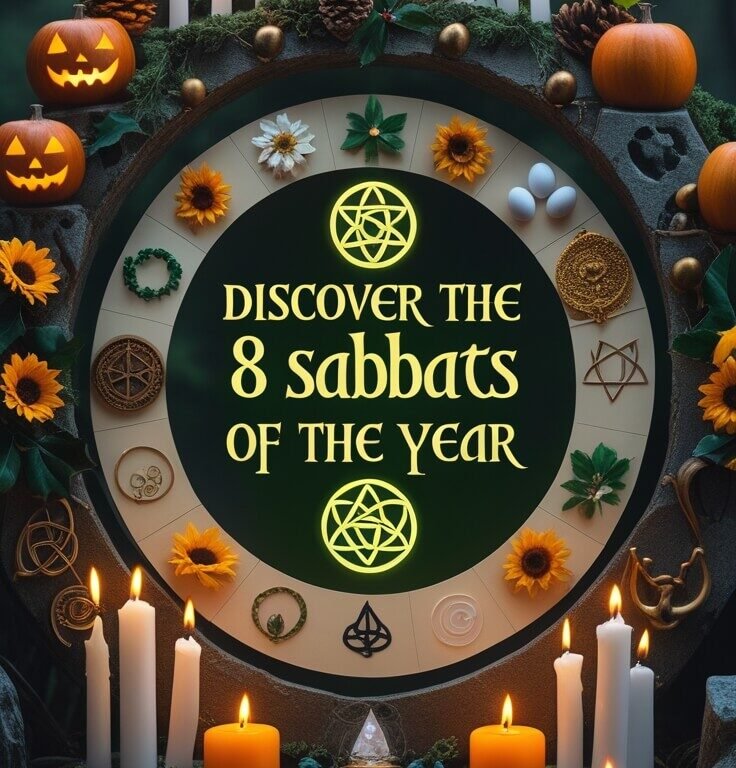Lupercalia was one of the wildest and most important festivals in ancient Rome.
Every February 15th, thousands of Romans gathered for rituals involving fertility, purification, and love. This powerful celebration lasted for over 800 years and directly influenced our modern Valentine’s Day traditions.
If you’ve ever wondered where our February love celebrations really come from, the answer lies in this fascinating ancient festival. Lupercalia combined spiritual practices, community bonding, and fertility rituals in ways that still inspire people today.
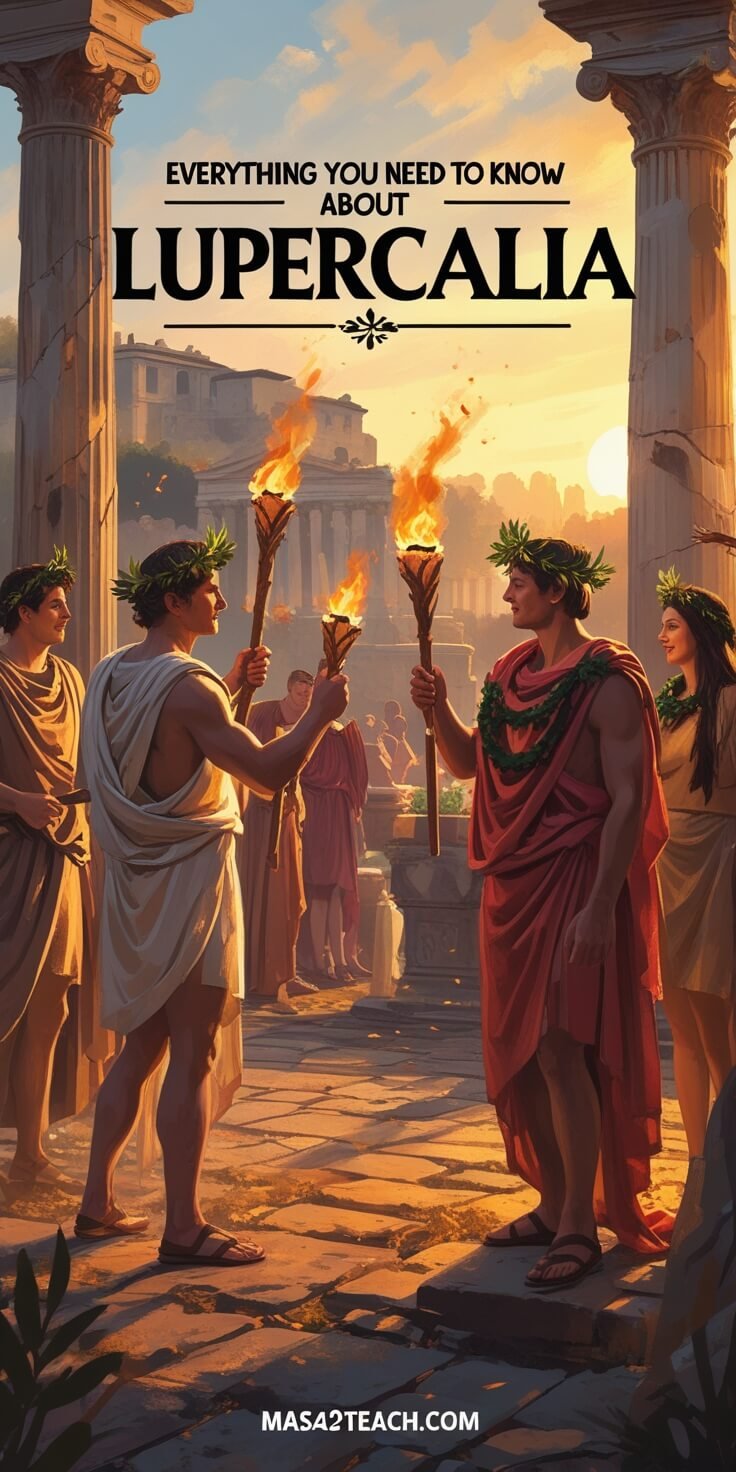
What is Lupercalia?
Lupercalia was an ancient Roman festival celebrated every February 15th to honor fertility, purification, and protection. The Romans dedicated this festival to Lupercus, their god of shepherds, and Faunus, their god of wild nature and fertility.
The festival got its name from “lupus,” the Latin word for wolf. This connects to the famous Roman legend where a she-wolf nursed the twin brothers Romulus and Remus, who later founded Rome. The location of the festival was the Lupercal, a sacred cave on Palatine Hill where this legendary event supposedly happened.
Romans believed Lupercalia served three main purposes. First, it purified their city from negative spiritual influences. Second, it brought divine blessings for fertility to people, animals, and crops. Third, it protected Rome from evil spirits and harmful forces.
The festival was so important that it continued even after Rome became Christian. It only ended when Pope Gelasius I replaced it with a Christian celebration in 496 AD.
How Lupercalia Was Celebrated in Ancient Rome
The Morning Sacrificial Rituals
Each Lupercalia began at sunrise with sacred ceremonies at the Lupercal cave. The Luperci, who were priests dedicated to Lupercus, performed the opening rituals that prepared the spiritual energy for the day’s celebrations.
The priests sacrificed goats and a dog to honor the gods. They chose goats because these animals represented fertility and wildness. The dog represented protection and loyalty. These weren’t cruel acts but sacred offerings that Romans believed opened communication between humans and divine forces.
After the sacrifice, the priests performed a special marking ritual. They touched the foreheads of two young men with a knife dipped in the sacrificial blood. Then they immediately wiped the blood away with wool soaked in milk. This ritual represented death of the old self and rebirth into spiritual power.
The marked young men had to laugh after this ceremony. Romans believed their laughter proved the ritual worked and that divine energy now flowed through them. These men became the day’s main spiritual runners, called Luperci.
The Sacred Running Through Rome
The heart of Lupercalia involved nearly naked young men running through specific areas of Rome. These runners, the Luperci, stripped down to just loincloths made from the goatskins of the sacrificed animals. They carried strips of goatskin called februa, which means “instruments of purification.”
The Luperci ran along the ancient boundaries of Rome, following a sacred route that traced where the original city had been founded. This wasn’t random running but a carefully planned spiritual journey that created protective energy around the entire community.
As they ran, the Luperci struck people they met with their goatskin strips. Women especially sought out these spiritual strikes because Romans believed they brought fertility, easy childbirth, and good health. The strikes weren’t painful but were seen as transfers of divine energy from the ritual to the person.
The running continued for hours, with the Luperci covering miles of ground while Rome’s citizens gathered to receive blessings and participate in the community celebration.
The Fertility and Matchmaking Traditions
Lupercalia included unique traditions for bringing couples together. Young unmarried women would place their names in a large container. Single men would then draw names randomly, and these couples would pair up for the duration of the festival and sometimes longer.
This wasn’t just random matchmaking but a spiritual practice. Romans believed that divine forces guided which names were drawn together. They trusted that the gods knew which couples would create the strongest families and the healthiest children.
Also Read:
- Imbolc: Ancient Festival of Light, Hope, and Spring’s Promise
- What Are the 8 Sabbats of the Year? A Beginner’s Guide to Sacred Celebrations
Some of these Lupercalia matches led to marriage, especially if the couple felt a genuine spiritual and emotional connection during their time together. The festival gave people a socially acceptable way to explore romantic relationships that might not have happened otherwise.
The matchmaking also served community purposes. It helped ensure that families formed across different social groups and kept the community’s genetic diversity strong.
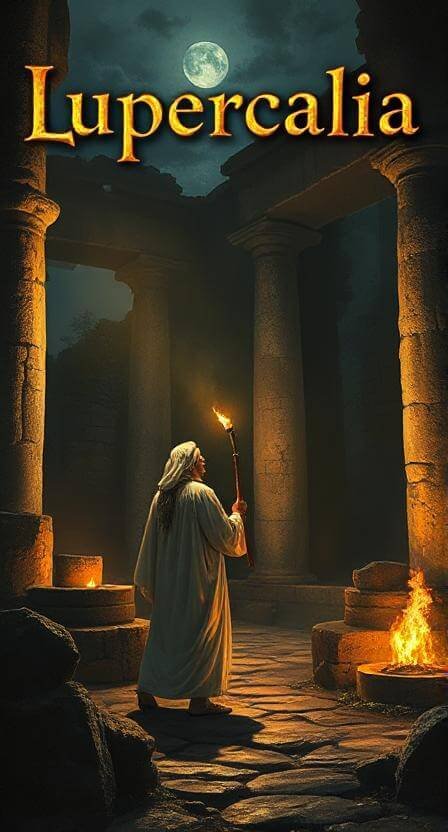
The Spiritual Meaning Behind Lupercalia
Purification and Spiritual Cleansing
Romans understood purification as essential spiritual maintenance. Just like we clean our homes and bodies, they believed we need to regularly clean our spiritual energy. Lupercalia provided this community-wide spiritual cleaning every February.
The timing was perfect for purification work. February comes at the end of winter when nature itself is preparing for renewal. Romans aligned their spiritual practices with these natural cycles, knowing that spiritual work is most powerful when it flows with nature’s rhythms.
The purification aspects of Lupercalia cleared away negative energy that had built up during the long winter months. This included personal problems, community conflicts, spiritual stagnation, and any harmful influences that might prevent spring’s new growth from flourishing.
Fertility as Divine Creative Power
When Romans celebrated fertility during Lupercalia, they thought about much more than just having babies. They understood fertility as the divine creative force that makes all growth and abundance possible.
Fertility energy blessed crops so communities wouldn’t starve. It blessed flocks so shepherds could prosper. It blessed human relationships so families could grow strong. It blessed creative endeavors so artists, builders, and inventors could bring new things into the world.
The festival honored both masculine and feminine aspects of fertility. The running and striking represented active, masculine energy that initiates growth. The receiving and nurturing represented feminine energy that sustains and develops what has been started. Romans knew both energies were necessary for true abundance.
Protection Through Spiritual Strength
Lupercalia created protective spiritual barriers around Rome and its people. Romans believed that negative spiritual forces constantly threatened their wellbeing, and they needed active divine protection to stay safe.
The festival renewed Rome’s spiritual defenses for another year. The ritual running around the city’s boundaries created an energetic shield that harmful spirits couldn’t cross. The community participation strengthened the bonds that held Roman society together.
Protection work also included personal spiritual strengthening. Participants left Lupercalia feeling more confident, more connected to divine forces, and better able to handle whatever challenges the coming year might bring.
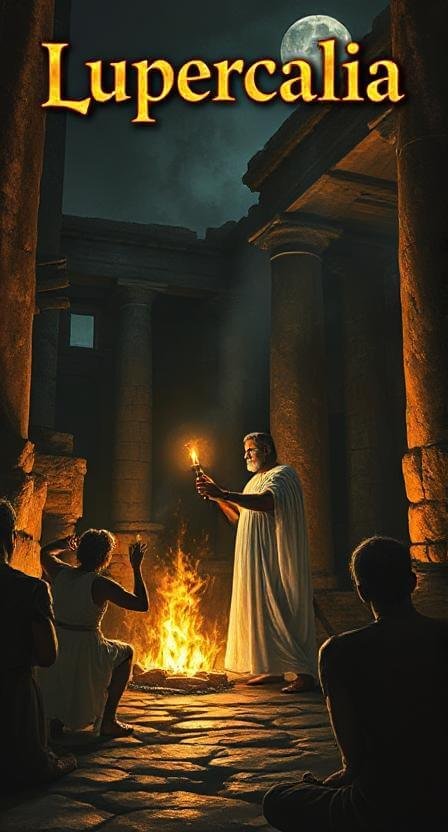
How to Celebrate Lupercalia Today
Modern Purification Practices
You can honor Lupercalia’s purification traditions by creating your own February 15th cleansing rituals. Start by cleaning your physical space thoroughly, then focus on clearing emotional and spiritual energy that no longer serves you.
Take a purifying bath or shower while setting intentions to release old patterns, negative thoughts, or spiritual stagnation. Use salt, herbs, or essential oils that feel cleansing to you. As you wash, imagine old energy flowing away and fresh spiritual energy filling the space it leaves behind.
Spend time in meditation or prayer, asking for divine help in clearing away anything that prevents you from growing and thriving. You might write down what you want to release and safely burn the paper, or simply speak your intentions aloud.
Fertility and Abundance Rituals
Create modern fertility rituals by focusing on what you want to grow in your life. This could be actual fertility if you’re hoping to conceive, but it might also be creative projects, business ventures, relationships, or personal growth.
Set up a sacred space with symbols of abundance like seeds, flowers, green candles, or images of things you want to create. Spend time visualizing your goals already accomplished and feeling grateful for the abundance that’s coming into your life.
Plant actual seeds as a physical representation of your spiritual intentions. As you care for these plants over the coming months, let them remind you of the goals and dreams you’re nurturing in other areas of life.
Protection and Boundary Work
Honor Lupercalia’s protective aspects by strengthening your spiritual boundaries and protection practices. This is especially important in our modern world where we’re constantly exposed to other people’s energy through technology and crowded environments.
Create protective rituals that feel authentic to your spiritual practice. This might involve visualizing white light around yourself and your home, carrying protective stones or symbols, or establishing energetic boundaries around your personal space.
Practice saying no to things that drain your energy and yes to things that support your spiritual growth. Lupercalia reminds us that protection includes actively choosing what we allow into our lives.
Community Connection
Lupercalia was always a community celebration, and modern practitioners can honor this by celebrating with others. Organize a February 15th gathering with friends or family members who share your interest in spiritual practices.
Share a meal, exchange blessings for the coming year, or create group rituals that support everyone’s goals and dreams. The energy of group practice amplifies individual intentions and creates stronger spiritual results.
If you can’t gather in person, consider online celebrations or simply reach out to people you care about with messages of love and support. The key is connecting with others in ways that honor the spiritual bonds between us.
The Historical Journey from Lupercalia to Valentine’s Day
Early Christian Changes
When Christianity became Rome’s official religion, church leaders wanted to replace pagan festivals with Christian celebrations. Pope Gelasius I officially ended Lupercalia in 496 AD and created Saint Valentine’s Day to take its place.
The new Christian celebration kept February’s focus on love but removed the fertility rituals, wild running, and spiritual practices that made Lupercalia so intense. Instead of honoring multiple gods, the new festival honored Saint Valentine, a Christian martyr.
This transition shows how spiritual traditions evolve while maintaining their core purposes. Both festivals celebrated love, just through different cultural and religious frameworks.
Medieval Romance Traditions
During medieval times, February 14th became associated with courtly love and romantic poetry. Writers like Geoffrey Chaucer connected the date with birds choosing their mates, creating new romantic traditions that built on the ancient fertility themes.
The medieval period added the elements that make modern Valentine’s Day recognizable – love letters, romantic gifts, and the focus on couples rather than community-wide celebration.
These romantic traditions kept alive some of Lupercalia’s original energy while making it acceptable to Christian culture. Love remained sacred, just in different ways.
Modern Valentine’s Day Connection
Today’s Valentine’s Day celebrations still carry echoes of ancient Lupercalia. The February timing, the focus on fertility and love, and even the matchmaking aspects all trace back to the Roman festival.
Understanding this connection can deepen our appreciation for both celebrations. We can honor the ancient spiritual wisdom while enjoying modern romantic traditions.
Why Lupercalia Still Matters Today
Reconnecting with Natural Cycles
Lupercalia reminds us that our ancestors lived in harmony with natural cycles and seasonal energy changes. They understood that February energy is perfect for purification, renewal, and preparing for spring’s new growth.
Modern life often disconnects us from these natural rhythms, but we can choose to reconnect. Celebrating Lupercalia helps us remember that we’re part of larger cosmic cycles and that aligning with these cycles supports our spiritual and physical wellbeing.
Honoring the Wild Sacred
The festival teaches us that spirituality includes wild, untamed aspects that resist neat categorization. True spiritual practice honors both our civilized selves and our instinctual, natural selves.
This integration creates authentic spiritual power that can handle real-world challenges. When we embrace our whole selves, including aspects that might seem uncivilized, we become more complete and more spiritually effective.
Building Strong Communities
Lupercalia shows us how spiritual practices can build community bonds while serving individual needs. The festival brought people together for shared spiritual experiences that strengthened the entire society.
We can apply this wisdom by creating modern spiritual communities that support individual growth while building collective strength and resilience.
Conclusion
Lupercalia gives us a powerful model for spiritual celebration that honors love, fertility, purification, and protection. This ancient Roman festival reminds us that spiritual practices can be both deeply meaningful and joyfully celebratory.
Whether you choose to revive Lupercalia traditions, integrate its wisdom into existing celebrations, or simply learn from its approach to spirituality, this festival offers timeless insights about connecting with divine forces that support life and love.
The wild sacred energy that our ancestors channeled through Lupercalia still flows through the world today. We can tap into this energy whenever we need purification, fertility, protection, or a deeper connection with the forces that create and sustain all life. The ancient wisdom remains available to anyone willing to embrace it with an open heart and a willing spirit.



